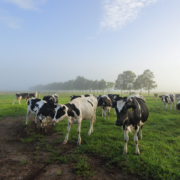We have completed a joint research study with Western Sydney University and the findings are outlined in a report, Improved Efficiency of Argo-Chemical Fertilisers as a Consequence of Enhanced Soil Treatments: Investigation the Impact of Converte Bio-Fertiliser and Seed Primer on Soil and Plant Health.
Summary of Findings:
- UNP additions stimulated basal respiration (considered a good predictor of overall biological activity in the soil) by 38% and 41% in Boorowa (wheat) and Laggan (pasture) respectively.
- There was some evidence that UNP and CSP altered the catabolic abilities of microbial communities in deeper soils (10‐20cm) at Boorowa (wheat), but treatment had limited impact on the catabolic profiles in the upper (0‐10cm) soil layer.
- The response of potential enzymes activities were variable, but typically stimulated under UNP+CSP additions in Boorowa (wheat) and under UNP additions at Laggan (pasture). This was particularly notable for enzymes associated with N and P cycling, suggesting increased N and P mineralisation under these treatments at the respective sites.
- UNP additions increased bacterial gene abundance (as a proxy for bacterial biomass) by 36% and 138% in Boorowa (wheat) and Laggan (pasture) respectively. At Boorowa, UNP+CSP increased bacterial gene copies by 55% providing strong evidence that UNP treatment stimulated bacterial growth in these soils.
- Fungal gene abundance (as a proxy for fungal biomass) was particularly responsive to the bio‐fertiliser treatment at Boorowa (wheat) and observed in both the 0‐10 cm and 10‐20cm soils. There was no evidence that UNP affected fungal abundance at Laggan (pasture).
- There was no effect of bio‐fertiliser treatment on the diversity of bacterial or fungal communities but each treatment did significantly alter the composition of bacterial and fungal communities at both Boorowa (wheat) and Laggan (pasture) and treatment effects were evidence at both 0‐10 cm and 10‐20 cm. On‐going analysis will provide taxonomic resolution to these treatment effects.
- UNP significantly increased soil C and N by about 50% at Laggan (pasture). Visual observations of the field showed a greener, denser sward in UNP treated soil (Figure 2) and this likely drove higher plant‐derived C‐inputs into the soil and stimulated microbial (particularly fungal) growth as evidenced by higher gene copy numbers in these soils.
- Bio‐fertiliser treatment (most notably CSP) increased total grain weight on collected samples at Boorowa.
Read the full report here. You can also read a one page summary here.





